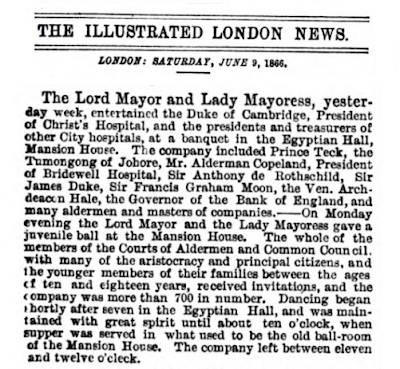 |
| Gambar 1: Litograf hukuman salang di hadapan Sultan Kedah pada tahun 1889, oleh Edouard Riou. Sumber: Un an en Malaisie, 1889-1890. (1892) oleh Jules Claine. |
 |
| Gambar 2: Jules Claine (1856-1938). Sumber: Perpustakaan Negara Perancis. |
Apabila tiada sumber yang dirujuk, timbul persoalan samada peristiwa yang dilakar ini benar-benar berlaku. Benarkah hukuman bunuh ini dibuat atas isyarat tangan Sultan Kedah, iaitu Sultan Abdul Hamid Halim Shah ibni Sultan Ahmad Tajuddin Mukarram Shah (1864-1943) (Gambar 3)? Benarkah hukuman salang di Kedah turut dilaksanakan pihak Inggeris bersama laskar Sepoy mereka? Adakah tombak juga digunakan selain dari keris salang?
 |
| Gambar 3: Sultan Abdul Hamid Halim Shah ibni Sultan Ahmad Tajuddin Mukarram Shah (1864-1943) (r.1881-1943) c. 1890. Sumber: GR Lambert & Co., KITLV 7249, Leiden University Libraries, Amsterdam. |
Apa yang perlu diketengahkan adalah kisah sebenar lakaran ini sebelum ianya dianggap sebahagian dari lipatan sejarah negeri Kedah. Fakta utama adalah hukuman salang hanya dijalankan oleh pembesar-pembesar Melayu dan bukan dengan kerjasama pihak Inggeris. Fakta seterusnya adalah hukuman salang ini telah dimansuhkan pihak Inggeris semenjak tahun 1809 (Newbold, 1839).
Pengarang buku 'Un an en Malaisie, 1889-1890' iaitu Jules Claine (1856-1938) adalah seorang pengembara Perancis yang telah ke Sumatera Utara, Pulau Pinang, Kedah dan Singgora sekitar tahun 1889 hingga 1890. Claine telah merakam beberapa keping gambar yang sebahagiannya telah dijadikan rujukan oleh Edouard Riou (1833-1900) dalam lakaran beliau yang digunakan Claine sebagai ilustrasi penulisannya.
Jika dibandingkan, kesemua lakaran Riou tidak berbeza dari gambar sebenar yang dirakam Claine. Cuma lakaran hukuman salang arahan Sultan Kedah ke-26 ini sahaja yang agak aneh; di mana ianya boleh dibuktikan sebagai rekaan semata-mata.
Jika dibanding rekod Perpustakaan Negara Perancis, imej-imej dalam litograf karya Riou ini adalah kombinasi dari 6 keping gambar yang berbeza. Pertama, rumah yang menjadi latarbelakang litograf ini adalah dari gambar sebuah rumah agam di Kedah (Gambar 4). Dalam rekod pada gambar asal dan juga catatan dalam buku Claine, ianya adalah kediaman rasmi Raja Siam di Kedah yang juga menjadi tempat kediaman Claine semasa tempoh lawatannya di sana.
Jika dibanding rekod Perpustakaan Negara Perancis, imej-imej dalam litograf karya Riou ini adalah kombinasi dari 6 keping gambar yang berbeza. Pertama, rumah yang menjadi latarbelakang litograf ini adalah dari gambar sebuah rumah agam di Kedah (Gambar 4). Dalam rekod pada gambar asal dan juga catatan dalam buku Claine, ianya adalah kediaman rasmi Raja Siam di Kedah yang juga menjadi tempat kediaman Claine semasa tempoh lawatannya di sana.
 |
| Gambar 4: Rumah Raja Siam di Alor Setar, Kedah. Sumber: Perpustakaan Negara Perancis. |
Susunan landskap dan pokok dalam litograf juga adalah berdasarkan gambar di Kedah (Gambar 5 & 6).
 |
| Gambar 5 Sumber: Perpustakaan Negara Perancis. |
 |
| Gambar 6 Sumber: Perpustakaan Negara Perancis. |
Bentuk badan dan pakaian tukang salang dan pesalah diambil dari gambar orang-orang Melayu-Siam yang dirakam Claine sekitar Singgora (Gambar 7).
 |
| Gambar 7 Sumber: Perpustakaan Negara Perancis. |
Senjata yang digunakan tukang salang iaitu tombak dan keris juga dilukis berpandukan rujukan kepada gambar rakaman Claine (Gambar 8).
 |
| Gambar 8 Sumber: Perpustakaan Negara Perancis. |
Manakala imej tentera Sepoy yang berbaris di belakang Sultan Kedah adalah diambil dari gambar perarakan pengebumian yang dirakam Claine di Pulau Pinang (Gambar 9).
 |
| Gambar 9 Sumber: Perpustakaan Negara Perancis. |
Apa yang pelik, setelah diteliti kesemua rekod, tiada gambar Sultan Kedah dan juga proses hukuman salang ini dalam koleksi simpanan Claine yang kini berada di Perpustakaan Negara Perancis.
Dengan itu, catatan peristiwa hukuman salang yang dikatakan diperintahkan Sultan Kedah pada tahun 1889 ini tidak pernah berlaku dan sesuatu yang telah dipalsukan. Ianya hanyalah hasil daya imaginasi Riou berdasarkan cerita-cerita lama yang didengari Claine. Hukuman yang telah dimansuhkan 80 tahun sebelumnya itu mungkin diwujudkan kembali kisahnya bagi memberi kesan dramatik kepada jalan cerita dan pengembaraan Claine.
Dengan itu, catatan peristiwa hukuman salang yang dikatakan diperintahkan Sultan Kedah pada tahun 1889 ini tidak pernah berlaku dan sesuatu yang telah dipalsukan. Ianya hanyalah hasil daya imaginasi Riou berdasarkan cerita-cerita lama yang didengari Claine. Hukuman yang telah dimansuhkan 80 tahun sebelumnya itu mungkin diwujudkan kembali kisahnya bagi memberi kesan dramatik kepada jalan cerita dan pengembaraan Claine.
Sumber:
- Claine, Jules. 1892. Un an en Malaisie, 1889-1890.
- Newbold, T.J. 1839. Political and Statistical Account of The British Settlements in The Straits of Malacca, vis Pinang, Malacca, and Singapore; with a History of The Malayan States on The Peninsula of Malacca, Vol I.
- Perpustakaan Negara Perancis.






















.jpg)